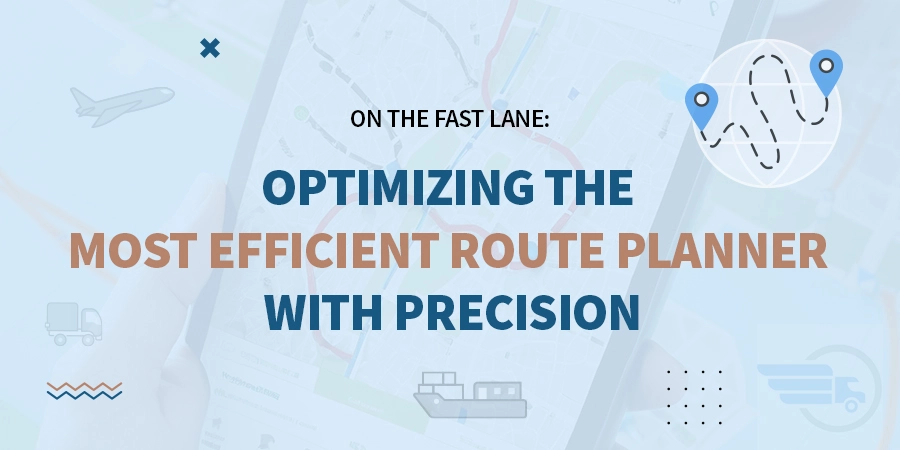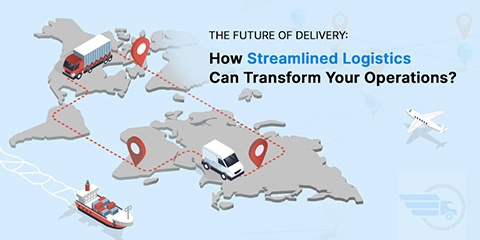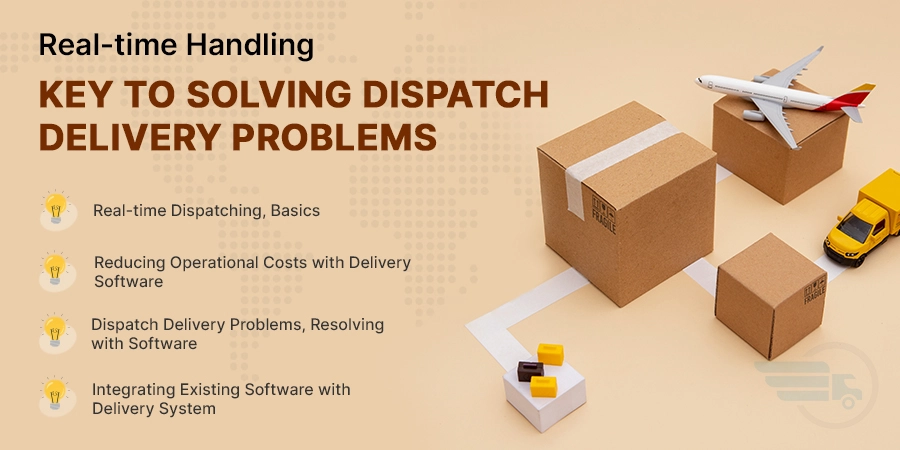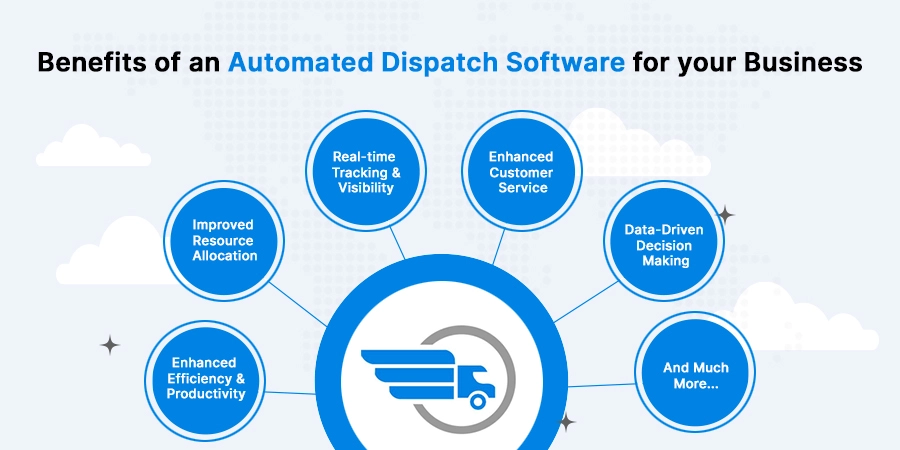Fast Track Optimization: The Art and Science of the Most Efficient Route Planner

Introduction
In a world where time and resources are paramount, optimizing routes for transportation, delivery, and even personal travel can lead to significant gains in productivity and cost savings. This blog explores the key components and advances in route planning, highlighting the delicate balance between technology and real-world applications.
Route planning has evolved from a simple navigation task into a complex optimization problem, demanding both art and science to achieve the most efficient route planner.
Overview of Route Planning
Route planning is the process of determining the best path from a starting point to a destination. It involves considering various factors such as distance, travel time, road conditions, and traffic patterns. In the context of logistics and transportation, route planning is crucial for reducing fuel consumption, meeting delivery deadlines, and enhancing overall operational efficiency. Traditional methods relied heavily on static maps and manual calculations, but the advent of technology has revolutionized this field.
Modern route planning systems use delivery management software with complex algorithms and vast amounts of data to generate optimal routes. The most efficient route planner can analyze multiple variables simultaneously, including real-time traffic updates, road closures, and weather conditions. The goal is to find the most efficient route that minimizes travel time and costs while maximizing resource utilization. As we delve deeper into the intricacies of route planning, it becomes clear that achieving efficiency is not just about choosing the shortest path but optimizing for various dynamic factors.
Importance of Efficiency
Efficiency in route planning is not merely a desirable feature; it is a necessity in today's fast-paced world. For businesses, efficient route planning and delivery management translate into lower operational costs, improved customer satisfaction, and a competitive edge in the market. For instance, logistics companies rely on the most efficient route planner to ensure timely deliveries, reduce fuel consumption, and manage their fleet effectively.
Efficient route planning has significant environmental implications. By reducing unnecessary travel, optimizing routes can lower carbon emissions and contribute to sustainability efforts. This is particularly important in urban areas where traffic congestion is a major issue. An efficient planner can help mitigate traffic jams, leading to smoother traffic flow and less pollution.
Key Components of the Most Efficient Route Planner
Creating the most efficient route planner involves several key components, each playing a vital role in the overall optimization process. From data collection to algorithm design, every element must work harmoniously to deliver the best results.
Data Collection and Analysis
Data is the cornerstone of any efficient route planning system. The quality and accuracy of the data directly impact the effectiveness of the route planner. Data collection involves gathering information from various sources, including GPS devices, traffic cameras, weather forecasts, and historical travel patterns.
Effective data analysis enables the route planner to account for real-time variables and provide accurate routing recommendations. For example, traffic data can help the most efficient route planner predict congestion and suggest alternative routes. Similarly, weather data can inform the planner about potential hazards such as heavy rain or snow, allowing for safer route adjustments. In logistics, data on delivery windows, vehicle capacities, and customer locations are essential for optimizing delivery schedules and minimizing travel distances.
Algorithm Design
At the heart of the route planner lies the algorithm. Algorithms are sets of rules and calculations used to process data and generate optimal routes. The design of these algorithms is critical to achieving efficiency. Common algorithms used in route planning include Dijkstra's algorithm, the A* algorithm, and genetic algorithms. Each has its strengths and applications, depending on the complexity and requirements of the task.
Dijkstra's algorithm, for instance, is widely used for finding the shortest path in a network, making it suitable for simple route-planning tasks. The A* algorithm, on the other hand, incorporates heuristics to improve search efficiency, making it ideal for more complex scenarios. Genetic algorithms mimic natural selection processes to explore a wide range of potential solutions and evolve the best route over iterations.
The choice of algorithm depends on factors such as the size of the network, the dynamic nature of the data, and the specific optimization goals.
The Art of Route Optimization
While science provides the foundation, the art of route optimization involves understanding and adapting to real-world complexities that cannot always be quantified or predicted.
Understanding Traffic Patterns
One of the most challenging aspects of route optimization is understanding and anticipating traffic patterns. Traffic congestion is influenced by numerous factors, including the time of day, road work, accidents, and special events. The planner must interpret these patterns and adjust routes accordingly. This requires a combination of historical data analysis and real-time monitoring.
By analyzing historical traffic data, the planner can identify trends and predict congestion at different times and locations. For example, rush hour patterns can be anticipated and avoided by scheduling deliveries during off-peak hours. Real-time monitoring allows for immediate adjustments in response to unexpected events such as accidents or sudden road closures.
The art lies in balancing predictive and reactive strategies to maintain optimal route efficiency.
Real-Time Adjustments
Real-time adjustments are crucial for maintaining the efficiency of a route planner. Even with the best algorithms and data, unforeseen events can disrupt the planned route. The ability to make quick and effective adjustments is what sets the most efficient route planner apart. This involves continuously monitoring traffic conditions, vehicle locations, and external factors such as weather changes.
Advanced planners use real-time data feeds to provide dynamic routing recommendations. For example, if a major traffic jam is detected on the planned route, the system can quickly reroute the vehicle to a less congested path. This not only saves time but also reduces fuel consumption and wear on the vehicle. The integration of real-time data and adaptive algorithms ensures that the route planner remains responsive and effective under varying conditions.
Technological Advances in Route Planning
The field of route planning has benefited immensely from technological advancements. Innovations in AI, machine learning, and GPS integration have transformed how routes are optimized and managed.
Role of AI and Machine Learning
Artificial Intelligence (AI) and Machine Learning (ML) have revolutionized the most efficient route planner by enabling systems to learn and improve over time. AI algorithms can analyze vast amounts of data to identify patterns and make predictions with high accuracy. Machine learning allows the planner to continuously refine its recommendations based on new data and feedback.
AI-powered route planners can learn from past deliveries to optimize future routes. They consider factors such as delivery times, traffic conditions, and customer preferences to provide personalized routing solutions. Machine learning models can also detect anomalies and adjust routes proactively, ensuring consistent efficiency.
The integration of AI and ML enhances the adaptability and intelligence of the route planner, making it more effective in dynamic environments.
Integration with GPS
Global Positioning System (GPS) technology is fundamental to modern route planning. GPS provides real-time location data, enabling accurate tracking and navigation. The integration of GPS with route planning systems allows for precise monitoring of vehicle positions and seamless guidance along the optimal route.
GPS integration enhances the functionality of the most efficient route planner by providing turn-by-turn directions, real-time traffic updates, and location-based alerts. It also facilitates efficient fleet management by allowing dispatchers to monitor the movements of multiple vehicles simultaneously.
With GPS, route planners can ensure that vehicles follow the most efficient paths, avoid delays, and reach their destinations on time. The synergy between GPS and advanced algorithms creates a powerful tool for route optimization in delivery software.
Challenges in Achieving Efficiency
Despite technological advancements, achieving efficiency is fraught with challenges. Data accuracy, unpredictable factors, and the complexity of real-world scenarios can pose significant hurdles.
Data Accuracy and Quality
The effectiveness of the most efficient route planner hinges on the quality and accuracy of the data it uses. Inaccurate or outdated data can lead to suboptimal routing decisions, causing delays and increased costs. Ensuring data accuracy involves continuous collection, validation, and updating of information from various sources.
Challenges in data accuracy arise from several factors. Traffic data may vary in reliability depending on the source and time of collection. Similarly, weather forecasts can change rapidly, affecting route planning decisions.
Addressing these challenges requires robust data management practices and the use of advanced data validation techniques. High-quality data is essential for making informed and reliable routing decisions.
Handling Unpredictable Factors
Unpredictable factors such as accidents, road closures, and sudden weather changes can disrupt even the best-laid plans. An efficient route planner must adapt quickly to these unforeseen events. This involves incorporating real-time data and having contingency plans in place.
Handling unpredictable factors requires a combination of technology and human intervention. The most efficient route planner can detect and respond to real-time changes, but human oversight is often necessary to make nuanced decisions. For example, a dispatcher might need to coordinate with drivers to navigate around a major accident or reroute deliveries during a storm.
The ability to handle unpredictability effectively is crucial for maintaining the efficiency and reliability of the route planner.
Conclusion
In the quest for the best route planner, both art and science play pivotal roles. The integration of advanced algorithms, real-time data, and adaptive strategies creates a robust foundation for route optimization. However, the real-world application of these technologies requires a deep understanding of traffic patterns, the ability to make real-time adjustments, and the foresight to anticipate and mitigate challenges.
Recap of Key Points
Efficient route planning is essential for reducing costs, improving customer satisfaction, and minimizing environmental impact. Key components such as data collection, algorithm design, and real-time adjustments form the backbone of effective route optimization.
Technological advancements in AI, machine learning, and GPS integration have significantly enhanced the capabilities of route planners. However, challenges such as data accuracy and unpredictable factors must be addressed to achieve optimal efficiency.
Final Thoughts on the Importance of Efficient Route Planning
Efficient route planning is not just a technological achievement; it is a critical aspect of modern transportation and logistics in the delivery business. As the world becomes increasingly connected and dependent on timely deliveries and efficient travel, the importance of having the most efficient route planner cannot be overstated.
By combining the latest technological innovations with a nuanced understanding of real-world dynamics, we can continue to improve route planning and drive progress in this vital field.
Latest Posts
- Transforming E-commerce: How Seamless Order Management Enhances Customer Experience
- Mastering Efficiency: The Role of Real-time Tracking Solutions in Restaurant Business
- The Future of Delivery: How Streamlined Logistics Can Transform Your Operations
- Real-time Handling: Key to Solving Dispatch Delivery Problems
- The Powerful Impact of Grocery Delivery Management System on Retail Business
- Benefits of an Automated Dispatch Software for your Business
- Six Essential Task-handling Features in Delivery Tracking System Software
- 8 Reasons to Implement Software-based Dispatch Management in this Era
- Reengineering Urban Mobility: Unveiling the Power of Dispatch Delivery Management System
- Order and Delivery Management Software: How it Streamlines Delivery Operations



